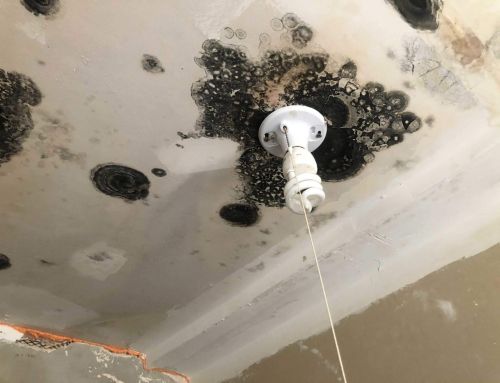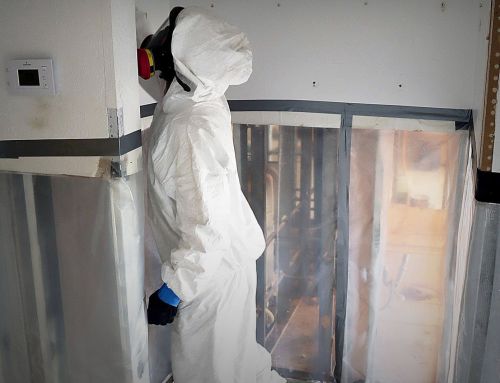Mold is a fungus made up of multicellular structures referred to as hyphae that develop into thread-like units. It is virtually everywhere, but you cannot see an individual mold spore with your naked eye. Mold is usually black, blue, or green, depending on the source of its nutrient. Before you address the mold problem, you need to understand what you’re up against. Here, we shall describe the 12 well-known mold species, how to identify them, and their potential health hazards. Find out why it is necessary to schedule a mold test rather than diagnose the issue yourself.
But before that, let’s see the general categories of harmful mold.
Three Classes of Mold
There are tens of thousands of mold species, some of which are life-threatening. Generally, dangerous mold falls under three groups:
- Pathogenic
- Allergenic
- Toxigenic
Pathogenic mold has been known to cause acute illnesses and can be mitigated with disinfectants, but heavy infestation requires professional intervention. As the name suggests, allergenic mold triggers allergic reactions, including pulmonary inflammation and asthma attacks. Lastly, toxigenic or toxic mold is the deadliest type that produces toxins that cause severe health issues.
1. Penicillium
You have probably come across the word Penicillin when buying antibiotics. The drugs are derived from Penicillium mold, which feeds on food and other sources. When penicillium mold burgeons into a colony, it forms a velvet-like blue-green structure. It can spread very fast after a water damage incident. Penicillium is allergenic and prefers areas such as the carpet, mattress, wallpaper, and HVAC ducts. Regular cleaning helps to eliminate small colonies, but you should consult mold specialists immediately.
2. Mucor
It is an allergenic form of mold, white or gray, and often thrives on AC units, leaky openings, and damp carpets. If you notice thick white patches where condensation occurs, you are probably having a Mucor mold issue. If left untreated, it can bring respiratory health issues to your household members. The health effects range from flu-like symptoms, breathing difficulty, malaise, and fever. In worst-case scenarios, Mucor can cause mucormycosis, a fungal disease that damages the lungs, renal system, brain, and sinuses. Never try to handle white or gray mold without safety gear. Call a professional instead.
3. Stachybotrys
Stachybotrys, dubbed nefarious black mold, is a type of toxigenic mold. It features a slimy texture and can be dark green or black. Stachybotrys mold commonly occurs in wet, humid areas, especially cellulose materials like cardboard, wood, paper, wicker, and hay. Because it releases mycotoxins, prolonged exposure might lead to depression, chronic fatigue, sinusitis, and breathing difficulty. People with respiratory problems experience sinus pain when they breathe nefarious black mold. Stachybotrys is also associated with pulmonary bleeding in infants and a host of neurological problems in children.
4. Acremonium Mold
It’s another toxigenic mold whose appearance keeps changing throughout the life cycle. In the initial stage, acremonium appears as a tiny moist mold that later becomes powdery. The color ranges from white, gray, orange, and pink. Watch out for infestation around window sealants, humidifiers, drain pans, cooling coils, and other places with condensation. Since acremonium is carcinogenic, it can affect the brain. Too much exposure to this mold is linked to low immunity and deterioration of bone marrow and other vital organs.
5. Ulocladium
Usually, the black ulocladium mold dwells in water and damp places. So, it is likely to infest your property after extreme water damage. Stay vigilant in monitoring condensation levels, leaks, and conditions in the basement. Ulocladium comes in two subspecies that may cause immune disorders, allergies, and hay fever. It often grows together with Chaetomium, fusarium, and Stachybotrys molds. To avoid confusing it with other mold types, seek professional mold inspection if you suspect an infestation.
6. Alternaria
This is the most widespread allergenic mold with a velvety texture and brown or dark green hairs. Alternaria spores can attach themselves to any damp surface or object. This means it can grow on leaky pipes, bathtubs, showers, and below the sinks. If you inhale Alternaria, you might experience asthmatic symptoms in your mouth and upper respiratory system. Call for our remediation as soon as you notice this mold because it spreads within no time.
7. Aspergillus
The allergenic aspergillus comprises long flask-shaped spores and forms a chain of clumps on a surface. There are more than 185 species of aspergillus, and they all have different colors. This mold prefers food, wood, and air conditioning units. Depending on the environmental conditions and the type of species, aspergillus can be more toxic. Some species produce a harmful carcinogenic compound known as aflatoxin. Signs of attack include respiratory inflammation, lung infection, and asthma.
8. Trichoderma
Trichoderma is a white allergenic mold with green patches. There are five distinct species of Trichoderma, some of which are pathogenic, causing pulmonary and hepatic liver infections. The mold colonies rapidly develop into wooly textured clusters that compact later on. Trichoderma carries an enzyme that can destroy building materials, textiles, and paper. So, if your home is infested with this mold, you’ll find your wooden structures rotting and crumbling easily.
9. Aureobasidium
Aureobasidium is one of the pathogenic molds that thrive on painted and wooden surfaces. Its color ranges from pink, brown, or black that darkens over time. Never attempt a DIY mold removal because this species can cause dermatitis, eye and nail infections if you directly contact it.
10. Cladosporium
It is a non-toxic mold that forms green or black pepper-like clusters. It occurs in both warm and cold environments. You will find it mostly on painted surfaces, air ducts, fiberglass, the back of the toilet. Though non-pathogenic, Cladosporium may trigger rashes, sore throat, and watery eyes in allergic people.
11. Chaetomium
Typically white or grey, Chaetomium resembles cotton and thrives in places with moisture problems. It has a distinctive musty odor and eventually turns black. Check for leaking roofs, wet basements, and underneath sinks because that is where Chaetomium mold likes to inhabit. Avoid touching it with bare skin as it can give you nail and skin infections.
12. Fusarium
If you live in colder environments, you are more likely to experience fusarium mold infestation in your home. This species is both toxigenic and allergenic and prefers food, compost, fabrics, wallpapers, and carpets. It can be red, pink, or white. Fusarium infestation potentially causes dermatitis, itchy eyes, sore throats, sneezing, and a running nose. In severe cases, it can lead to brain abscess, hemorrhage, and bone infection.
Get the Best Mold Remediation from a High-Rated Company
Without the right skills, it will be hard to tackle a chronic mold issue. Now that you have learned the various species of mold be sure to contact Pur360 for remediation. For over 15 years, we have conducted mold testing and removal in Florida, Illinois, Wisconsin, and Texas. Even the HomeAdvisor network highly rates our phenomenal services and expertise. We also scooped the Housecall Superpro award for exceptional customer service.
Let us safely and effectively help you get rid of mold in your residential or commercial property. We are eco-friendly and strictly use non-chemical mold solutions backed with patented technology. After the remediation, we can help you with whole-house sanitization, odor removal, attic stain removal, painting, carpet removal, and disposal. It doesn’t matter what type of mold is causing you a headache. Leave the dirty work to experienced mold removal technicians to figure out what you’re dealing with.
Call now for in-depth testing, mold remediation, and free estimates for these services.



